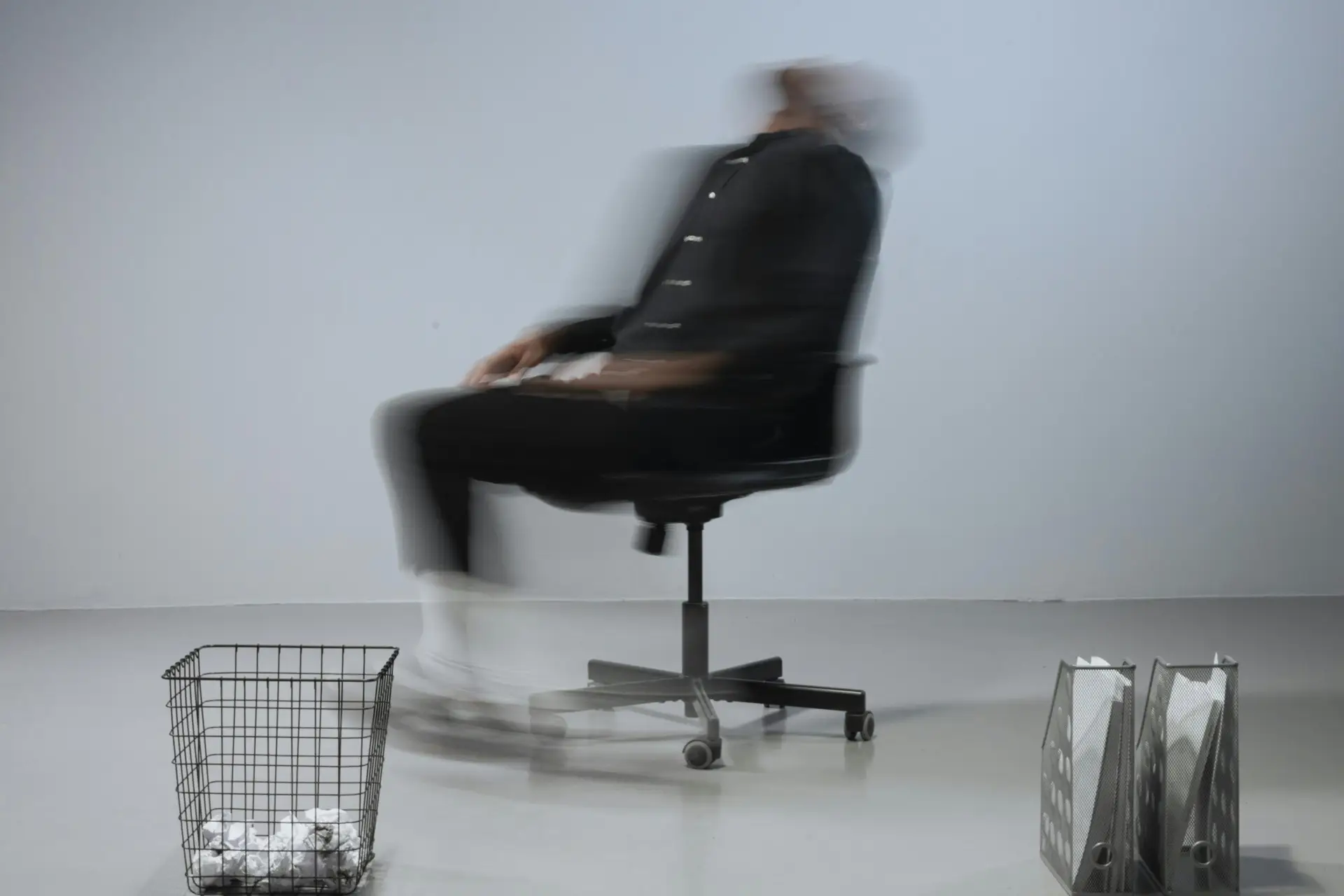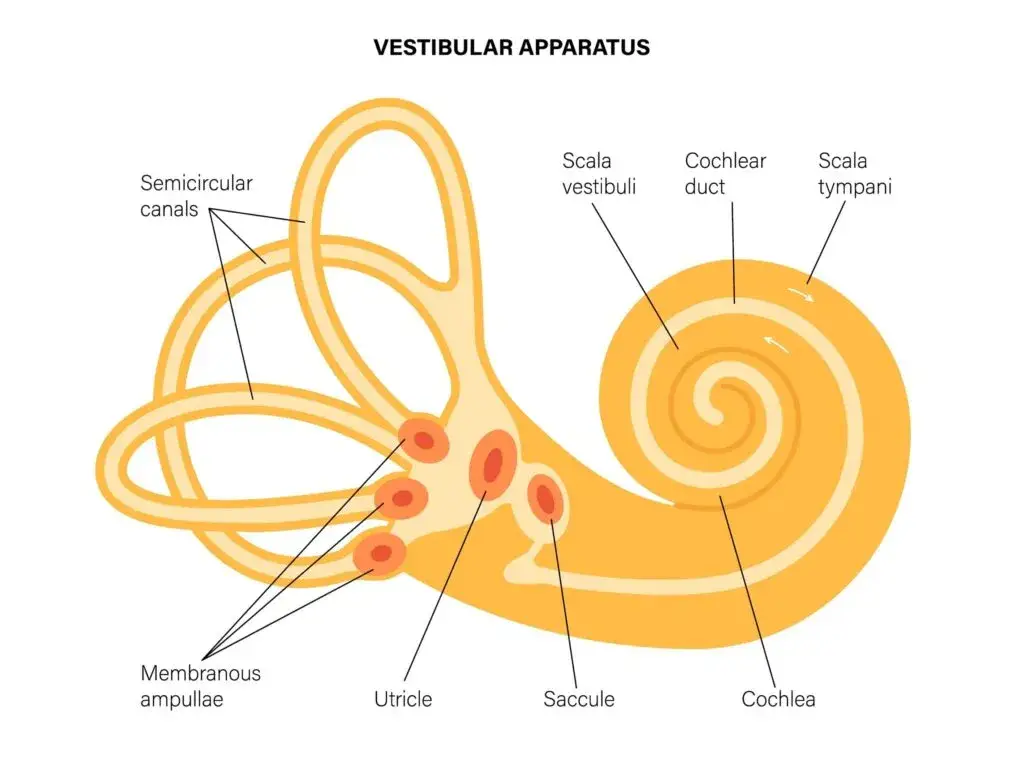
Why is my head spinning? When the room feels like it’s tilting, your steps wobble, or your head spins for “no reason,” it’s scary—and exhausting. For many people across Sarasota, Lakewood Ranch, and Bradenton, these dizzy spells aren’t random at all. They’re often connected to a precise structural problem in the upper neck where your head and spine meet.
At Lavender Family Chiropractic in Sarasota, Florida, we focus on Upper Cervical Chiropractic—a gentle, precise approach that restores balance where it matters most: the junction between your skull and the top two neck bones (the atlas C1 and axis C2). In this in‑depth guide, you’ll learn why upper cervical misalignment can trigger vertigo and balance issues, how conditions like BPPV, MdDS, Menière’s disease, and vestibular migraine fit into the picture, and why correcting the structural root cause can be a life‑changing step forward.
Why Is My Head Spinning? Quick Takeaways
- Balance is multi‑system: inner ears (vestibular), eyes (visual), muscles/joints (proprioception), and brainstem integration.
- Upper cervical misalignment can irritate nerves, alter muscle tone, distort posture, and disrupt the signals your brain uses to keep you steady.
- Common vestibular diagnoses—BPPV, vestibular migraine, Menière’s disease, and MdDS—often coexist with neck dysfunction.
- ENT care and vestibular therapy are valuable, but they don’t always correct the structural problem driving recurrent dizziness.
- Upper Cervical Chiropractic at Lavender Family Chiropractic is gentle and precise—no popping, twisting, or cracking—and it’s designed to help your body regain stable orientation and calm the nervous system.
How Your Balance System Actually Works
Standing upright is an elegant team effort:
- Your inner ears (vestibular system) sense head motion and spatial orientation. Tiny canals filled with fluid detect rotation; otolith organs sense linear movement and gravity.
- Your eyes (visual system) provide horizon and focus—critical to orient your body in space.
- Your muscles and joints (proprioception) report position and tension throughout your body, especially the neck.
- Your brainstem integrates all of this, compares inputs, and sends commands back down the spinal cord to stabilize your eyes, neck, and core muscles.
If any one of these systems becomes noisy or distorted, you feel it as dizziness, lightheadedness, spinning, rocking, floating, visual motion sensitivity, or unsteadiness—often with nausea, headache, ear fullness, or brain fog.
Meet the Upper Cervical Spine (C0–C2)
The top of your spine isn’t just another joint. The atlanto‑occipital and atlanto‑axial joints (where the skull meets C1 and C2) are built for precision. They host a dense web of mechanoreceptors—sensors that constantly update your brain about head position. This region sits inches away from vital brainstem centers that coordinate eye movements, muscle tone, balance reflexes, and autonomic functions (heart rate, digestion, and more).
Because the upper cervical spine is so information‑rich, small misalignments here can create large sensory distortions. The brain relies on “clean data” to keep you upright. When the atlas (C1) shifts, your body may subtly tilt shoulders, twist the pelvis, or change head posture to keep your eyes level. Over time, this compensation pattern becomes your new normal—until symptoms flare.
How Upper Cervical Misalignment Triggers Dizziness & Vertigo
1) Irritation to nerves and brainstem pathways
Abnormal joint mechanics in C0–C2 can bombard the brainstem with chaotic signals. That sensory “static” can cause:
- Spinning (vertigo) or rocking/boat feelings
- Visual sensitivity and motion sickness
- Nausea, head/ear pressure, and headaches/migraines
2) Abnormal muscle tone and posture
Your brain uses neck input to steer eye and postural reflexes. If the atlas is off, muscle tone becomes asymmetrical, pulling the head and body off center. You might notice one shoulder higher, a head tilt, or a foot that feels like it’s landing “different.” As posture skews, so does your balance.
3) Altered blood and fluid dynamics
The vertebral arteries, venous outflow, and cerebrospinal fluid (CSF) dynamics are influenced by cervical alignment. While every person is unique, some find that restoring neutral alignment reduces pressure sensations or ear fullness associated with dizzy spells.
4) Eustachian tube mechanics & barometric sensitivity
Neck tension patterns and cranial mechanics can influence how well the Eustachian tubes equalize pressure. That’s why some people notice flare‑ups with weather changes, flying, or after a cold—and also why addressing the upper neck can help resilience.
Where Common Vestibular Diagnoses Fit In
Benign Paroxysmal Positional Vertigo (BPPV)
BPPV is often described as brief spinning triggered by rolling over, looking up, or bending down. It’s linked to small crystals (otoconia) dislodging into the semicircular canals. Canalith repositioning maneuvers can help move these crystals. But here’s the rub: why do episodes come back? For many people, neck dysfunction and head posture continually stress the system, making relapses more likely. Correcting upper cervical alignment removes a big mechanical stressor and supports longer‑term stability.
Vestibular Migraine
Vestibular migraine can show up as vertigo, motion sensitivity, visual aura, or dizziness with or without headache. Triggers include stress, sleep disruption, hormones, weather, and sensory overload. The trigeminocervical complex—a hub where upper cervical nerves and trigeminal (head/face) inputs converge—can become hypersensitive. By reducing aberrant neck input, upper cervical care often helps de‑sensitize that network so your brain processes motion more calmly.
Menière’s Disease
Menière’s is characterized by episodes of vertigo, ear fullness/pressure, tinnitus, and fluctuating hearing loss. While fluid imbalances in the inner ear are central, many patients also present with neck stiffness, head tilt, and postural imbalance. Optimizing atlas alignment may reduce overall neural irritation and improve fluid regulation and postural control, supporting better day‑to‑day function alongside your medical care.
Mal de Débarquement Syndrome (MdDS)
MdDS feels like you’re still on a boat—rocking, swaying, bobbing—long after travel, or sometimes spontaneously. The central nervous system can “lock in” a maladaptive motion pattern. Because the neck provides the brain with critical orientation data, cleaning up neck input can help the brain re‑calibrate. Many MdDS sufferers also report visual motion sensitivity and neck fatigue—two signs that upper cervical alignment is worth investigating.
Chronic Dizziness & PPPD‑like Patterns
Some people don’t fit neatly into a single label. They feel “off,” foggy, unsteady, and anxious about motion. Upper cervical misalignment can be both a driver and a maintainer of these loops. When we restore alignment, patients often describe a gradual shift from “constantly managing dizziness” to “remembering what normal feels like again.”
ENTs & Vestibular Therapy: Helpful—but Not Always Structural
ENT evaluation can rule out infections, serious ear pathology, or progressive hearing loss. Vestibular therapy (VRT) retrains gaze stabilization, balance strategies, and confidence. We respect—and often recommend—both.
However, neither ENT care nor VRT typically realigns C1/C2. If your neck is sending distorted signals, your brain keeps getting confused. It’s like trying to recalibrate a drone while its gyroscope is bolted in crooked. That’s why many people experience partial relief from VRT or temporary improvement from canalith maneuvers but still relapse—the structural driver hasn’t been corrected.
Upper Cervical Chiropractic directly addresses the mechanical and neurological integrity of the head‑neck junction so that everything else you do (sleep hygiene, hydration, nutrition, VRT homework) starts working with a stable foundation instead of against a crooked reference point.
What Makes Upper Cervical Care Different
- Precision imaging: We utilize 3D CBCT imaging (cone‑beam CT) to visualize the atlas/axis in three dimensions. This lets us measure misalignments down to fractions of a degree.
- Functional nervous system scans: We use paraspinal infrared thermography (Tytron) to assess autonomic tone and functional nerve irritation along the spine.
- Mathematically tailored corrections: Your adjustment is calculated from your images—no guessing, no “one‑size‑fits‑all.”
- Gentle technique: Corrections are precise and light—there’s no popping, twisting, or cracking. Most patients are surprised at how comfortable the process feels.
- Hold is gold: The goal isn’t to adjust you every visit; it’s to help you hold alignment so your body can heal and stabilize. As your nervous system calms, symptoms typically decrease in frequency and intensity.
Our Process at Lavender Family Chiropractic (Sarasota, FL)
- Comprehensive Consultation
We listen—really. When did it start? What worsens it—rolling in bed, screens, stores, storms, driving? Do you have ear fullness, migraines, neck pain, TMJ, or brain fog? Your story drives our plan. - Advanced Imaging & Scans
We perform 3D CBCT imaging of the upper cervical spine and Tytron scanning to map functional nerve patterns. This gives us objective data on alignment and stress. - Customized Correction
Using your exact measurements, we deliver a gentle, specific atlas/axis correction designed to clear interference, reduce nerve irritation, and restore symmetry. - Post‑Correction Rest & Re‑Scan
You’ll typically rest after the correction so your body can integrate the change. We re‑scan to confirm improvements in nerve function. - Stabilization Plan
Most care plans include a stabilization phase with periodic checks to ensure you’re holding alignment. We’ll integrate simple home strategies: sleep posture, hydration, cervical‑friendly work setups, and, when appropriate, collaboration with your ENT or vestibular therapist.
What You Might Feel as You Improve
- Fewer sudden spins when turning in bed or looking up/down
- Less visual motion sensitivity in stores or scrolling
- Reduced head pressure/ear fullness during weather swings
- Smoother gait and steadier steps
- Clearer thinking and calmer nerves
Healing is a process, not a switch. Many patients notice early wins within the first weeks, with deeper stability over 6–12 weeks as the nervous system re‑calibrates and posture normalizes. Complex cases (long‑standing MdDS, Menière’s, or vestibular migraine) may require a longer arc, but the direction—more good days—is what we’re after.
Self‑Checks You Can Try at Home
- Mirror posture check: Do you see a head tilt, one shoulder higher, or a rotated chin? Subtle asymmetries hint at upper cervical strain.
- Sleep test: Do you always avoid one side because it triggers spins or neck pain? That’s a common sign of atlas involvement.
- Screen/supermarket sensitivity: If visual motion overwhelms you, your brain may be coping with noisy neck input.
These aren’t diagnoses, but they’ll help you notice patterns we can assess with imaging and scans.
Two Patient Spotlights
“The Shopper” (Vestibular Migraine + Neck Pain)
She couldn’t handle big‑box aisles without feeling seasick. CBCT showed a subtle C1 rotation; Tytron scans confirmed asymmetrical nerve heat patterns. After a tailored atlas correction and stabilization plan, she reported: “I can shop and cook dinner without lying down. My neck is lighter, and the screens don’t make me woozy.”
“The Traveler” (MdDS‑like Rocking + Weather Sensitivity)
Post‑cruise, he felt the dock still moving for months. Head tilt and upper trap tension were obvious. After a sequence of gentle corrections and strategies for sleep and hydration, he noticed: “Storm fronts don’t flatten me anymore. Driving feels normal again.”
Results vary, but stories like these are common because we focus on root‑level alignment at the head‑neck junction.
Why We See Dizzy Patients Relapse Less Often
It’s simple: When alignment holds, the brain trusts its inputs. That settles the system. Instead of fighting dizziness with willpower or constant exercises, your body operates from a clean map. Vestibular therapy can then work better—and many patients need less of it—because it’s no longer compensating for a crooked reference.
Who We Serve (Greater Sarasota–Manatee–Tampa Bay)
We care for people from Sarasota, Lakewood Ranch, Bradenton, Parrish, Ellenton, Venice, Osprey, Punta Gorda, St. Petersburg, Siesta Key, Longboat Key, Lido Key, and Myakka City—and visitors who travel for specialized Upper Cervical care. If you’ve searched “upper cervical chiropractor near me,” “vertigo doctor near me,” “Migraine doctor near me,” or “chiropractor Sarasota Florida,” you’re in the right place.
Top 15 FAQs About Head‑Spinning, Dizziness & Upper Cervical Care
1) Is all dizziness “vertigo”?
No. Vertigo is spinning; dizziness can also feel like rocking, floating, off‑balance, lightheaded, or foggy. Upper cervical issues can influence all of these.
2) Can an atlas misalignment really affect my ears?
Indirectly, yes. Neck input modulates brainstem centers that coordinate eye‑ear‑neck reflexes. If the neck is noisy, your inner ear signals are harder to integrate.
3) What if my ENT says my ears are fine?
Great—then we look upstream. If your ears are healthy, the head‑neck alignment is a prime suspect for persistent balance problems.
4) Will Upper Cervical adjustments hurt?
No. Our corrections are gentle and precise—no popping, twisting, or cracking. Most patients find them comfortable and calming.
5) How many visits will I need?
It depends on your case history and how well you hold alignment. Many patients see changes within weeks, and stability builds over 6–12 weeks.
6) Do you work with vestibular therapists or ENTs?
Yes. We collaborate when needed. Our role is to correct the structural issue so your medical and therapy care works better.
7) Can Upper Cervical care help BPPV?
BPPV maneuvers move crystals; we address why your system stays sensitive. Together, this reduces recurrence for many patients.
8) What about Menière’s disease?
While no single approach fits everyone, optimizing head‑neck alignment can reduce neural irritation and improve day‑to‑day regulation, often easing pressure and imbalance.
9) I get migraines with dizziness—can you help?
We frequently see vestibular migraine improve as we calm the trigeminocervical system through precise atlas/axis corrections.
10) Do I need an MRI first?
If you already have imaging, bring it. Otherwise, we rely on 3D CBCT and clinical indicators to plan safe, specific care. We’ll refer out if red flags call for additional tests.
11) What if my dizziness is worse in stores or scrolling?
That’s classic visual motion sensitivity—often tied to neck inputs. Correcting alignment can make busy environments manageable again.
12) Can stress and poor sleep make this worse?
Absolutely. Stress and sleep debt amplify nervous‑system reactivity. We’ll coach simple routines that support recovery.
13) Is Upper Cervical Chiropractic safe for older adults?
Yes. The technique is low‑force and tailored. Many older adults appreciate gentle corrections and the focus on holding rather than frequent adjustments.
14) Do you treat TMJ and neck pain, too?
We do. TMJ, upper cervical dysfunction, and dizziness often travel together. Addressing the atlas/axis can calm jaw tension, reduce headaches, and improve posture.
15) How soon can I expect relief?
Some feel changes within days; others build steadily over weeks. The goal is lasting stability, not quick but short‑lived fixes.
Action Steps if Your Head Is Spinning
- Rule out emergencies: If you have sudden severe headache, fainting, double vision, new weakness, slurred speech, or stroke‑like symptoms, seek emergency care.
- Notice patterns: Which positions, screens, stores, or weather shifts trigger it? Track them briefly.
- Check your posture: Head tilt, shoulder height, and jaw clenching are clues.
- Hydrate + sleep: Simple pillars calm the system while we evaluate alignment.
- Schedule a precise Upper Cervical evaluation: Don’t guess—measure it with 3D CBCT and Tytron.
Why Choose Lavender Family Chiropractic
- We focus in Upper Cervical—this is our daily focus, not a side service.
- 3‑doctor team: Dr. Rusty Lavender, Dr. Jacob Temple, and Dr. Will Guzinski collaborate on complex cases.
- Cutting‑edge tech: 3D CBCT imaging and Tytron paraspinal infrared thermography guide every decision.
- Gentle, precise care: Corrections tailored to your scans—no popping or twisting.
- Root‑cause mindset: We aim for stability, not mere symptom management.
Address: 5899 Whitfield Ave Ste 107, Sarasota, FL 34243
Website: www.chiropractorsarasotaflorida.com
Phone: (941)243‑3729
Find us from Sarasota, Lakewood Ranch, Bradenton, Parrish, Ellenton, Venice, Osprey, Punta Gorda, St. Petersburg, Siesta Key, Longboat Key, Lido Key, and Myakka City.
What a Typical Care Plan Looks Like
- Week 1–2: Consultation, 3D CBCT, Tytron scans, first correction, post‑rest, re‑scans. Focus on hydration and sleep. Many patients notice fewer spins rolling in bed and less pressure in the head/ears.
- Weeks 3–6: Fewer corrections as you hold longer. Balance confidence returns; screens and stores become easier.
- Weeks 6–12: Stabilization phase. We reinforce the habits that help you hold alignment. Dizzy “flares” become shorter and rarer.
Your timeline may be faster or slower depending on history, injuries, and overall health—but the aim is durable change.
How Upper Cervical Complements Vestibular Therapy
We love VRT—when it’s built on a straight foundation. Think of VRT as software training and Upper Cervical as hardware alignment. Together, you get the best of both worlds: a level head and a brain that trusts its sensors.
- If you’re in VRT now, we coordinate so your exercises align with your new neutral posture.
- If you tried VRT before and plateaued, re‑attempting after alignment often yields better results.
For BPPV Specifically
Canalith repositioning is excellent for moving crystals. If BPPV keeps coming back, we assess whether neck mechanics and head posture are priming the inner ear for relapse. Correcting atlas/axis alignment reduces the positional strain that often re‑triggers episodes.
For Menière’s, Vestibular Migraine & MdDS
These diagnoses require patience and a holistic plan. We focus on:
- Restoring alignment to calm neural traffic at the brainstem
- Reducing trigger stacking (sleep debt, dehydration, visual overload)
- Co‑managing with your ENT/neurologist when needed
- Tracking objective changes via Tytron scans and postural findings
Our outcome goal is simple: fewer attacks, shorter duration, and greater freedom.
What About “Pinched Nerves”?
People often describe their symptoms as a “pinched nerve.” In the upper cervical region, it’s more accurate to think in terms of irritated nerve pathways and distorted sensory input. The atlas/axis doesn’t typically “pinch” like a disc herniation in the lower neck, but misalignment can agitate the system enough to mimic those sensations—especially when headaches, TMJ, or shoulder tension pile on. Precise correction reduces that irritation so the nervous system can quiet down.
Your Next Step—Let’s Re‑Center Your World
If your head is spinning, you don’t have to white‑knuckle life or avoid your favorite places. There’s a smarter path: measure, correct, stabilize.
Lavender Family Chiropractic in Sarasota Florida offers complimentary consultations to learn more about you. Click the link below!
https://intake.chirohd.com/new-patient-scheduling/724/lavender-family-chiropractic
Visit our Website!
To learn more about us go to http://www.chiropractorsarasotaflorida.com
We also service Bradenton, Parrish, Ellenton, Ruskin, Venice, Tampa, St. Pete, Osprey, Longboat, Lakewood Ranch, Myakka City.
If you are in Tampa, Fort Myers, or Salt Lake City, you can visit my other locations! NeckWise Upper Cervical. Visit, www.neckwise.com
If you are not local, visit www.uccnearme.com to find a doctor in your area.
Ask for our Upper Cervical Balance Evaluation—it includes a detailed consultation, 3D CBCT imaging, and Tytron scans to see if atlas/axis misalignment is keeping your world off‑kilter.
Insurance & Payment Options
Our office is out of network with insurance. Many of our patients receive a superbill to submit to their insurance for reimbursement based on their coverage. We offer many different payment options as well as finance options.
Final Encouragement
You’re not broken—you’re just out of alignment. When the head‑neck junction returns to neutral, your brain can trust your world again. At Lavender Family Chiropractic, we combine science‑grade imaging, gentle precision, and compassionate care to help you regain balance—so you can get back to the life you love in Sarasota, Lakewood Ranch, Bradenton, and beyond.
If you’re searching for a “chiropractor near me,” “upper cervical chiropractor near me,” or the best chiropractor Sarasota Florida for vertigo and balance problems—we’re here. Let’s re‑center your world.





